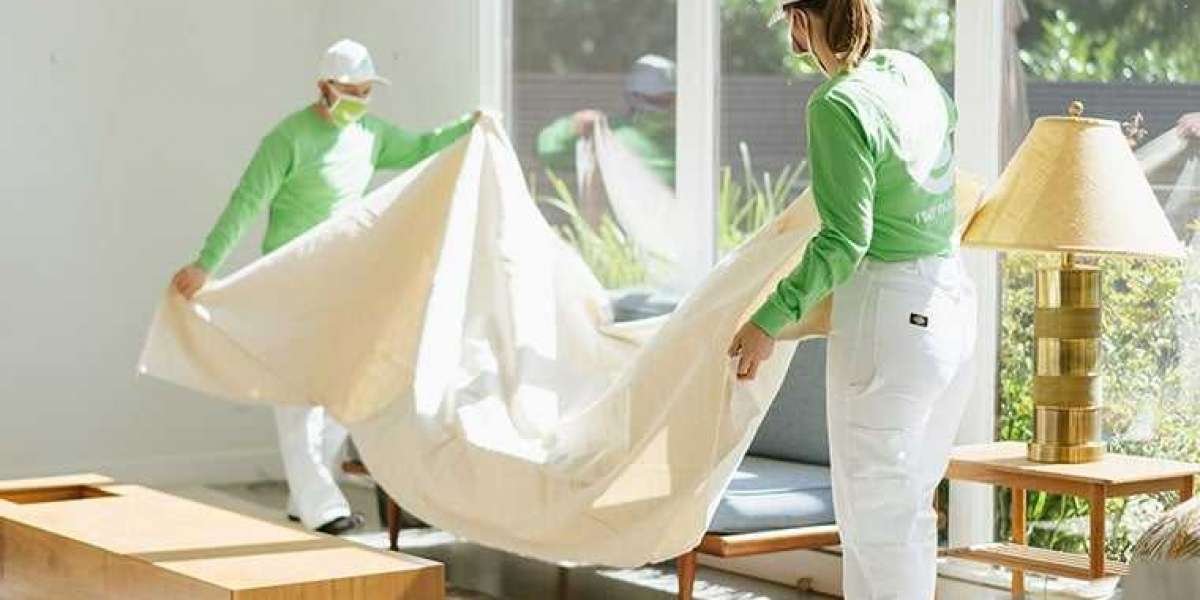Canvas drop cloths are a popular choice among painters, contractors, and DIY enthusiasts who need reliable protection for floors, furniture, and surfaces during projects. Known for their versatility, they provide both durability and effectiveness in shielding against paint spills, dust, and debris. Their long-lasting nature becomes especially important for those involved in multiple projects, as reusing materials helps to reduce costs and minimize environmental impact.
What Makes Canvas Drop Cloths Durable?
Canvas drop cloths are typically made from heavy-duty cotton material, known for its strength and durability. The density of the weave and the weight of the fabric contribute to the longevity of painters drop cloths. Let's break down the key elements that make canvas such a durable material:

Cotton Construction:
Cotton fibers are naturally strong and resilient, capable of withstanding significant wear and tear. When woven into a thick fabric like canvas, the material becomes even more durable. The tight weave of the canvas adds to its robustness, making it resistant to tearing, stretching, and fraying.
Reinforced Edges:
Many canvas drop cloths come with reinforced edges or hems. These reinforcements prevent fraying and add to the overall durability of the cloth, especially when subjected to rough handling or repeated washing. The reinforced edges also help the drop cloth maintain its shape over time, ensuring it remains functional even after multiple uses.
Washable and Reusable:
Unlike plastic sheeting or paper-based alternatives, canvas drop cloths can be washed and reused multiple times. Washing the cloth removes any paint or debris, restoring it to near-original condition. This reusability factor is a significant contributor to the long-term durability of painters drop cloths, making them a cost-effective solution for professionals and DIY enthusiasts alike.
Comparing Canvas Drop Cloths to Other Protective Materials
When considering durability, it's essential to compare canvas drop cloths to other commonly used protective materials like plastic sheeting, paper drop cloths, and tarps. Each material has its own set of pros and cons, but canvas often stands out as the most durable option for repeated use.
Tarps:
Tarps, often made from materials like polyethylene or nylon, can offer durability similar to canvas. However, they are not as breathable as canvas, which can trap moisture underneath and lead to potential damage to floors or surfaces. Additionally, tarps can be more challenging to fold and store compared to painters drop cloths, which are flexible and easy to handle.
Maximizing the Lifespan of Canvas Drop Cloths
To get the most out of your painters drop cloths and ensure they remain durable for repeated use, proper care and maintenance are essential.
Cleaning After Use:
After each use, it's crucial to clean your painters drop cloths thoroughly. Paint splatters, dust, and debris can accumulate over time, reducing the effectiveness and longevity of the cloth. For water-based paints, a simple rinse with water can remove most residue. For oil-based paints, you may need to use a paint thinner or mineral spirits to clean the cloth. Be sure to follow the manufacturer's cleaning instructions to avoid damaging the fabric.
Proper Storage:
Proper storage is key to maintaining the durability of painters drop cloths. After cleaning, allow the cloth to dry completely before folding and storing it. Storing a damp cloth can lead to mold and mildew growth, which can weaken the fabric and shorten its lifespan. Store your painters drop cloths in a dry, cool place, away from direct sunlight, to prevent fading and deterioration.
Avoiding Sharp Objects:
While canvas is durable, it is not indestructible. Avoid dragging sharp objects across the cloth, as this can cause punctures or tears. If you need to place heavy or sharp objects on the cloth, consider adding an additional layer of protection, such as cardboard or foam padding, to prevent damage.
Regular Inspection:
Before each use, inspect your painters drop cloth for any signs of wear and tear. Small holes or frayed edges can be repaired with a patch or reinforced with additional stitching. Addressing minor issues early on can prevent them from becoming larger problems that could compromise the durability of the cloth.
Environmental Benefits of Reusing Canvas Drop Cloths
In today's environmentally conscious world, the ability to reuse materials is more important than ever. Canvas drop cloths offer significant environmental benefits compared to disposable alternatives like plastic sheeting or paper drop cloths.
Sustainability of Cotton:
Cotton, the primary material used in canvas drop cloths, is a natural and renewable resource. Unlike synthetic materials like plastic, cotton is biodegradable and has a lower environmental footprint. By choosing painters drop cloths, you are supporting the use of sustainable materials that are better for the planet.
Long-Term Cost Savings:
While painters drop cloths may have a higher upfront cost compared to disposable alternatives, their durability and reusability make them a more cost-effective choice in the long run. Investing in a high-quality painters drop cloth can save you money over time, as you won't need to replace it as frequently as you would with plastic or paper options.
When Are Canvas Drop Cloths Not the Best Option?
While canvas drop cloths offer many advantages, there are situations where they may not be the best choice for protection. Understanding these limitations can help you make informed decisions about when to use canvas and when to consider other materials.
Heavy-Duty Industrial Applications:
For extremely heavy-duty applications, such as construction sites with heavy machinery or sharp debris, canvas drop cloths may not provide enough protection. In these cases, reinforced tarps or other specialized materials designed for industrial use may be a better option.
Outdoor Use in Wet Conditions:
Canvas drop cloths are water-resistant but not waterproof. If you're working outdoors in wet conditions, canvas may not offer the level of protection you need. In such cases, a waterproof tarp or plastic sheeting may be more suitable to prevent water from seeping through and damaging surfaces.
Specific Chemical Exposures:
If you're working with harsh chemicals or solvents, painters drop cloths may not be the best choice, as the fabric can absorb these substances and become damaged. Specialized protective materials that are resistant to chemical exposure may be necessary for certain projects.
Ending Point
Canvas drop cloths are indeed durable enough for repeated use, provided they are properly cared for and maintained. Their cotton construction, weight, and reinforced edges make them a reliable and long-lasting option for protecting surfaces during a wide range of projects. Compared to other protective materials like plastic sheeting and paper drop cloths, canvas offers superior durability, reusability, and environmental benefits.



